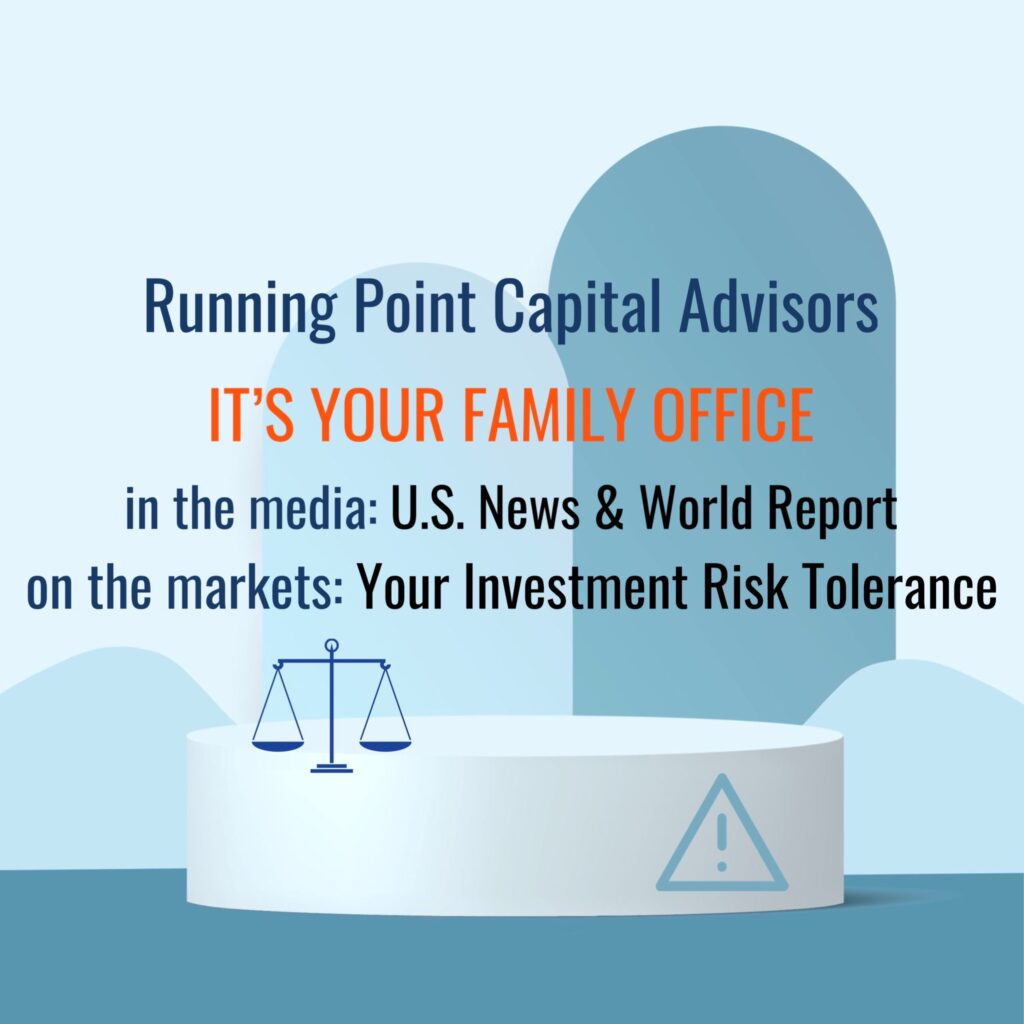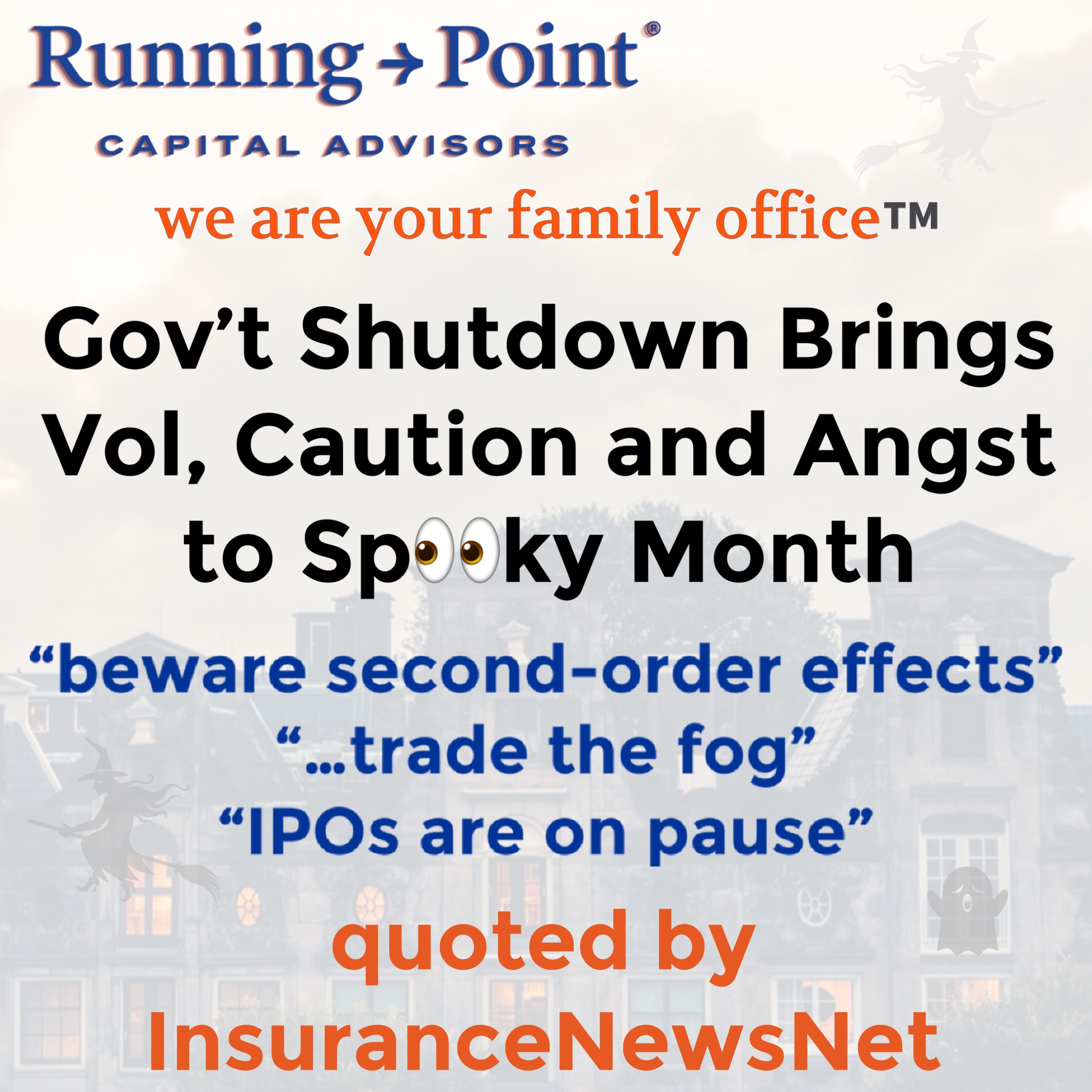Risk tolerance can change with market and life events
Running Point and its chief investment officer, Michael Ashley Schulman, CFA, were quoted by U.S. News & World Report in an article — by Kate Stalter, “How to Determine Your Investment Risk Tolerance” — regarding how investors should determine their risk tolerance and level of market anxiety.
This article was also picked up by The Capital Advisor in Brazil.
How do you assess risk tolerance changes? Understand the “why”!
When working with a person who wants to take either more or less risk than their financial plan has determined, understanding the “why” is crucial. It’s important to assess or re-assess their life situation, individual goals, financial situation, and comprehension of risk. Was something missed in their original plan or has there been a life altering event like the birth of a child, death of a parent, or change in income? If they are comfortable with taking on more or less risk, investment options can be adjusted accordingly. Ultimately, the objective is to align the investment strategy with a person’s risk tolerance and investment goals.
Partners can and often do have different risk tolerance levels
Compromises can be found to help couples with different portfolio risk comfort levels. This may involve a portfolio with a mix of both aggressive and conservative investments, or keeping certain assets separate for each individual to manage or figuratively think of as theirs. Many couples have separate 401(k)s, IRAs, or trust accounts that can be managed to different risk tolerances.
It’s important for a couple to have open and honest discussions about finances and investment priorities in order to come to a mutually acceptable agreement. An attentive fianncial advisor can be both a valuable guide and coach for this and a written financial plan can provide the necessary roadmap to keep a family on their agreed upon path.
Quoted article excerpt is below:
Advisor vs. Self-Evaluation of Risk Tolerance
Investors working with a financial advisor can get help formulating a risk-appropriate plan designed to generate the return they need. But the process can be more difficult for those flying solo.
“Investors without an advisor can approach risk tolerance by evaluating their own financial goals, time horizon and personal risk tolerance,” says Michael Ashley Schulman, partner and chief investment officer at Running Point Capital Advisors in El Segundo, California.
He acknowledges, though, that unbiased self-evaluation is difficult.
“I’ve met many people who consider themselves conservative but are actually aggressive, and vice-versa,” Schulman says. “Much depends on their frame of reference.”
He notes that people are often aggressive in some aspects of their life and conservative in others.
“We’ve all seen the person that rushes down the highway like a maniac, but then takes five minutes at the grocery store to select a loaf of bread,” he says. “Self-analysis without guidance is challenging; you can consider using online risk tolerance assessments or working with a financial professional on a limited basis.”
Schulman says it’s important for go-it-alone investors not only to understand the relationship between risk and reward, but also the value of income streams and what they can stomach when portfolio values decline.

Disclosure: The opinions expressed are those of Running Point Capital Advisors, LLC (Running Point) and are subject to change without notice. The opinions referenced are as of the date of publication, may be modified due to changes in the market or economic conditions, and may not necessarily come to pass. Past performance is not indicative of future results. Forward-looking statements cannot be guaranteed. Running Point is an investment adviser registered with the U.S. Securities and Exchange Commission. Registration does not imply a certain level of skill or training. More information about Running Point’s investment advisory services and fees can be found in its Form ADV Part 2, which is available upon request. RP-23-16


